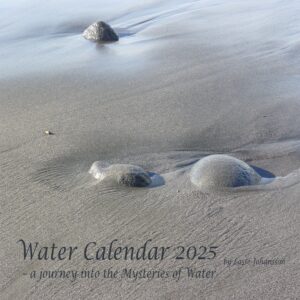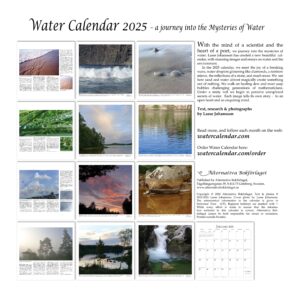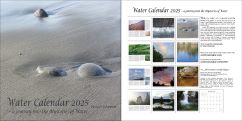 With the mind of a scientist and the heart of a poet, we journey into the mysteries of water.
With the mind of a scientist and the heart of a poet, we journey into the mysteries of water.
In 2025, we meet the joy of a breaking wave, water droplets glistening like diamonds, a rainbow mirror, the reflections of a stone, and much more. We see how sand and water almost magically create something out of nothing. We walk on healing dew and meet soap bubbles challenging generations of mathematicians. Under a misty veil we begin to perceive unexplored secrets of water.
Each image tells its own story – to an open heart and an enquiring mind.
On this site you can follow the journey – read each text and sink into each image – as each new month appears.
Essay of the month
Will be published each month, starting January 2025.
Join the journey into the Mysteries of Water
What if we could take some moments each day reconnecting with those magic moments in nature?
That is why I created Water Calendar, to convey that magic, that curiosity, that emotional connection with nature.
Get a physical copy of Water Calendar 2025, hang it on the wall and join the journey into the Mysteries of Water!
A beautiful wall calendar, with stunning images and essays on water and the environment.

